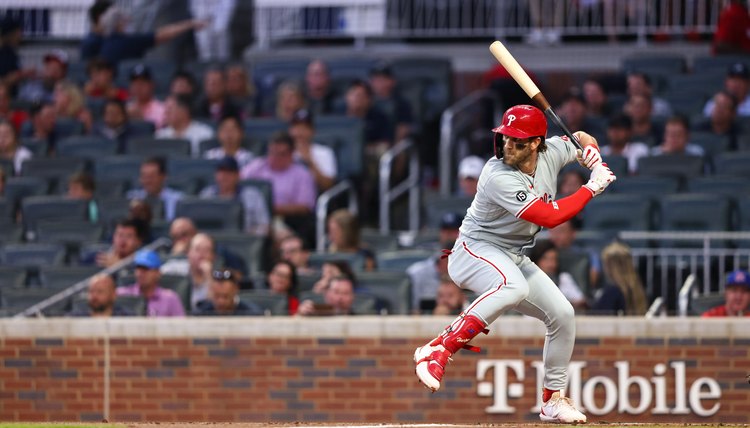OPS Baseball: How to Calculate OPS in Baseball

Key Takeaways
- To calculate OPS, add a player's on-base percentage and their slugging percentage. For example, a player with an OBP of .280 and a SLG of .500 will have an OPS of .780.
- To calculate SLG, the formula is Singles + Doubles x 2 + Triples x 3, + Home Runs x 4 divided by the number of at bats.
- To calculate On Base Percentage, you add up a baseball player’s “box score” stats like hits, walks, and times hit by a pitch (or hbp), and then divide it with a denominator of plate appearances (at bats plus walks plus hbp plus sacrifice flies).
Statistics have always been a huge part of Major League Baseball. Batting average, runs batted in (or rbis), hits, total bases, runs and more have become commonplace when discussing baseball and its many leagues. But in recent years, the statistics have become incredibly more complicated as baseball has evolved. Sabermetrics statistics like on base percentage (OBP), slugging percentage (SLG) , and wins above replacement (WAR) now rule the conversation, showing up in baseball cards and on broadcasts. For MLB experts, the king among these is on base percentage plus slugging(OPS), one of the end-all, be-all stats to a players’ worth. On the surface it looks like a hard statistic to calculate and understand, but it can easily be broken up into a step by step process. Stats like these help to compare the greats like Cardinals Rogers Hornsby, Dodgers Jackie Robinson, and Red Sox Ted Williams.
1. How to understand and calculate On Base Percentage
On Base Percentage, or OBP is a key baseball statistic and the first major statistic needed to understand OPS. On Base Percentage quite literally measures how many times a hitter gets on base.
To calculate On Base Percentage, you add up a baseball player’s “box score” stats like hits, walks, and times hit by a pitch (or hbp), and then divide it with a denominator of plate appearances (at bats plus walks plus hbp plus sacrifice flies).
OBP will give you an accurate percentage of how many times a player has gotten on base during a given time span. In 2021, the league average OBP was .317 and multi-time all-star Mike Trout is the active leader with an OBP of .416
2. How to understand and calculate Slugging Percentage
Slugging percentage, or SLG is the other major statistic needed in calculating OPS. It's a lot like measuring OBP, but instead of measuring a player's quantity of being on base, SLG measures the quality of a player's hits. Slugging percentage does this by measuring what kind of hit a player gets when he hits the ball by assigning each base a number (Single = 1, Double = 2, etc.).
To calculate SLG, the formula is Singles + Doubles x 2 + Triples x 3, + Home Runs x 4 divided by the number of at bats.
Extra-base hits are very vital to this stat and help balance OPS to account for power. Babe Ruth is the all time leader in this statistic with an outstanding .690 slugging percentage or slugging average.
3. How to calculate and understand OPS
So now that we understand how to calculate OBP and SLG, it should be noted that OPS is quite literally On-Base plus Slugging, making it much easier to calculate a player’s ops.
To calculate OPS, add a player's on-base percentage and their slugging percentage. For example, a player with an OBP of .280 and a SLG of .500 will have an OPS of .780.
This represents almost the best of both worlds between the two statistics, as it measures how much a player gets on base and the quality of their hits. Barry Bonds has the highest season OPS with video game esque 1.422 in 2004.
OPS Baseball 2022 Leaders
- 1 AaronJudge CF NYY 1.111
- 2 YordanAlvarez DH HOU 1.019
- 3 PaulGoldschmidt 1B STL .982
- 4 JoseAltuve 2B HOU .920
- 5 FreddieFreeman 1B LAD .918
- 6 MannyMachado 3B SD .897
- 7 NolanArenado 3B STL .891
- 8 RafaelDevers 3B BOS .879
- 9 AustinRiley 3B ATL .877
- 10 ShoheiOhtani DH LAA .875
References
Writer Bio
Blaise is a Freshman at the University of Missouri, studying Journalism at the world-renowned J school. He is the host of the Fast Five Podcast with his Childhood friend Sam Sinclair and interns with the Sports AI platform Pine Sports. He is a huge fan of the Kansas City Chiefs and the St Louis. Cardinals and hopes to cover them professionally in his near future.
